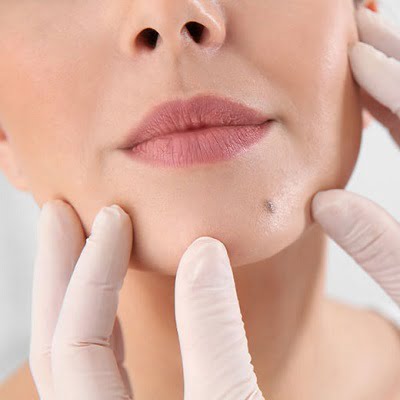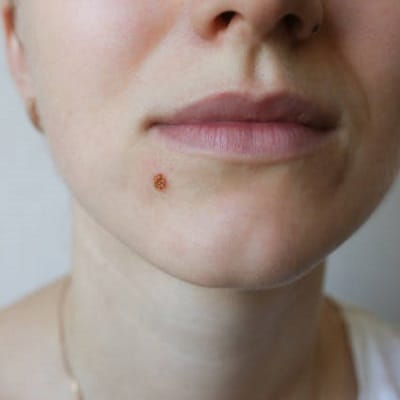
Moles are common skin growths that vary in size, shape, and colour. While most moles are harmless and don’t require removal, some individuals opt for mole removal treatment in Islamabad due to cosmetic concerns, discomfort, or needing to assess the mole for potential health risks. One of the primary concerns that people have when considering mole removal is whether the procedure can leave behind scars.
In this blog, we’ll delve into the various methods of mole removal, the factors that can influence scarring, and how to minimize the risk of noticeable scars. So, keep reading!
Mole Removal Methods:
There are several methods used for mole removal, each with its advantages, disadvantages, and potential for scarring:
- Excision: This method involves cutting out the mole and stitching the wound closed. Larger or deeper moles often require excision to ensure complete removal. While excision can result in a linear scar, a skilled dermatologist can use techniques that minimize scarring.
- Shave Excision: Shave excision involves using a scalpel to shave off the mole’s raised portion, leaving the mole’s base intact. This method is commonly used for protruding moles and typically results in a flatter scar that fades over time.
- Laser Removal: Laser treatment involves using a focused beam of light to break down the pigment in the mole cells. Laser removal tends to cause less bleeding and is suitable for smaller, non-cancerous moles. However, it may not be as effective for deeper moles and can sometimes result in hypopigmentation or hyperpigmentation.
- Cryotherapy: This method involves freezing the mole with liquid nitrogen, causing it to peel off. Cryotherapy is most effective for small, raised moles. The treated area may form a scab, which falls off to reveal new skin. This method usually results in minimal scarring.
Can Mole Removal Cause Scarring?
The potential for scarring after mole removal depends on several factors, including the type of mole, the removal method used, the individual’s skin type, and their aftercare practices. While some scarring is possible with any surgical procedure, advances in technology and techniques have significantly reduced the risk of noticeable scarring.
- Surgical Excision: Excision is more likely to result in some scarring, especially for larger moles. However, skilled surgeons take precautions to minimize scarring by placing incisions along natural skin lines and using meticulous suturing techniques. Over time, these scars often fade and become less noticeable.
- Laser Removal: Laser mole removal is less invasive than excision and may cause minimal scarring. However, individuals with darker skin tones might be at a higher risk of post-inflammatory hyperpigmentation, where the treated area becomes darker than the surrounding skin. It usually fades over time.
- Shave Removal: Shave removal typically produces less scarring than excision since it doesn’t involve deep tissue removal. Scarring is usually minimal and often goes unnoticed once the area has healed.
Preventing and Minimizing Scars:
While it’s not always possible to completely prevent scars after mole removal, there are steps you can take to minimize their appearance:
- Choose a Skilled Professional: Opt for a qualified dermatologist or plastic surgeon experienced in mole removal procedures. Their expertise can make a significant difference in the outcome.
- Follow Post-Procedure Care Instructions: Your healthcare provider will provide instructions on how to care for the treated area to promote proper healing. Following these instructions diligently can help prevent complications and scarring.
- Avoid Sun Exposure: Protect the healing area from sun exposure, as UV rays can delay the healing process and increase the risk of hyperpigmentation.
- Use Silicone Gel Sheets: Silicone sheets can help flatten and soften scars. Consult your healthcare provider before using any scar-reduction products.
- Topical Treatments: Over-the-counter or prescription creams containing ingredients like vitamin E, silicone, or hyaluronic acid can help minimize the appearance of scars.
- Massage: Gently massaging the healing area can improve blood circulation and aid in breaking down scar tissue.
- Patience: Remember that scars take time to mature and fade. Be patient and give your body the time it needs to heal.
All Summed Up!
Mole removal is a standard procedure that can enhance physical appearance and peace of mind. While scarring is possible, advances in medical techniques and aftercare practices have significantly reduced this risk.
Choosing the suitable removal method, a skilled professional, and diligently following post-procedure care instructions are key to achieving the best possible outcome with minimal scarring.
If you’re considering mole removal, consult the best practitioner at SKN Cosmetic Clinic Islamabad, who can guide you through the process and help you make an informed decision based on your circumstances.







Book your Appointment